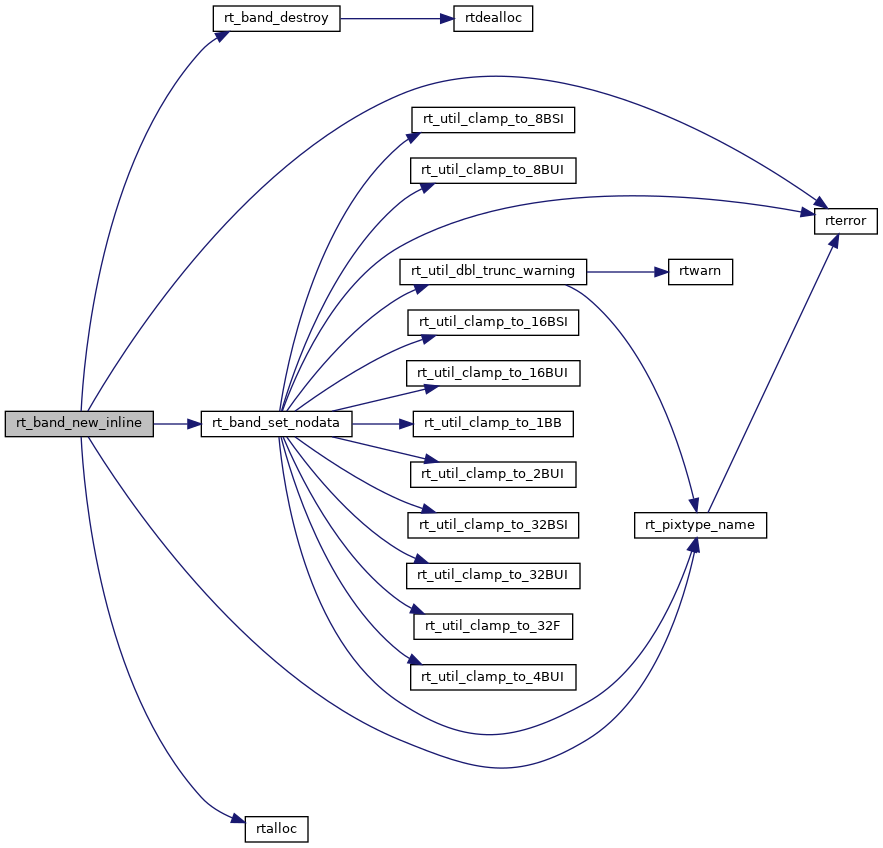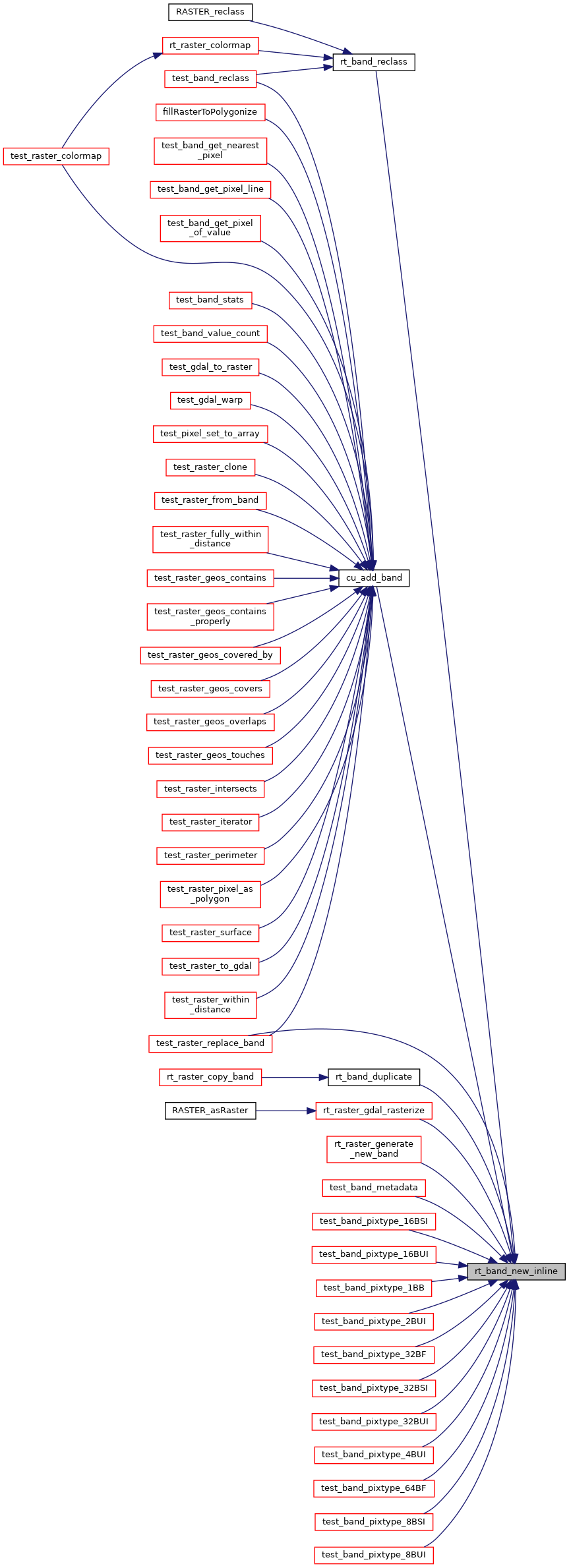◆ rt_band_new_inline()
| rt_band rt_band_new_inline | ( | uint16_t | width, |
| uint16_t | height, | ||
| rt_pixtype | pixtype, | ||
| uint32_t | hasnodata, | ||
| double | nodataval, | ||
| uint8_t * | data | ||
| ) |
Create an in-db rt_band with no data.
- Parameters
-
width : number of pixel columns height : number of pixel rows pixtype : pixel type for the band hasnodata : indicates if the band has nodata value nodataval : the nodata value, will be appropriately truncated to fit the pixtype size. data : pointer to actual band data, required to be aligned accordingly to rt_pixtype_aligment(pixtype) and big enough to hold raster width*height values. Data will NOT be copied, ownership is left to caller which is responsible to keep it allocated for the whole lifetime of the returned rt_band.
- Returns
- an rt_band or NULL on failure
- Parameters
-
width : number of pixel columns height : number of pixel rows pixtype : pixel type for the band hasnodata : indicates if the band has nodata value nodataval : the nodata value, will be appropriately truncated to fit the pixtype size. data : pointer to actual band data, required to be aligned accordingly to rt_pixtype_aligment(pixtype) and big enough to hold raster width*height values. Data will NOT be copied, ownership is left to caller which is responsible to keep it allocated for the whole lifetime of the returned rt_band.
- Returns
- an rt_band, or 0 on failure
Definition at line 63 of file rt_band.c.
void rterror(const char *fmt,...)
Wrappers used for reporting errors and info.
Definition: rt_context.c:199
rt_errorstate rt_band_set_nodata(rt_band band, double val, int *converted)
Set nodata value.
Definition: rt_band.c:733
Definition: librtcore.h:2314
References ovdump::band, ovdump::data, ES_NONE, FALSE, RASTER_DEBUGF, rt_band_destroy(), rt_band_set_nodata(), rt_pixtype_name(), rtalloc(), and rterror().
Referenced by cu_add_band(), rt_band_duplicate(), rt_band_reclass(), rt_raster_gdal_rasterize(), rt_raster_generate_new_band(), test_band_metadata(), test_band_pixtype_16BSI(), test_band_pixtype_16BUI(), test_band_pixtype_1BB(), test_band_pixtype_2BUI(), test_band_pixtype_32BF(), test_band_pixtype_32BSI(), test_band_pixtype_32BUI(), test_band_pixtype_4BUI(), test_band_pixtype_64BF(), test_band_pixtype_8BSI(), test_band_pixtype_8BUI(), and test_raster_replace_band().
Here is the call graph for this function:

Here is the caller graph for this function:
